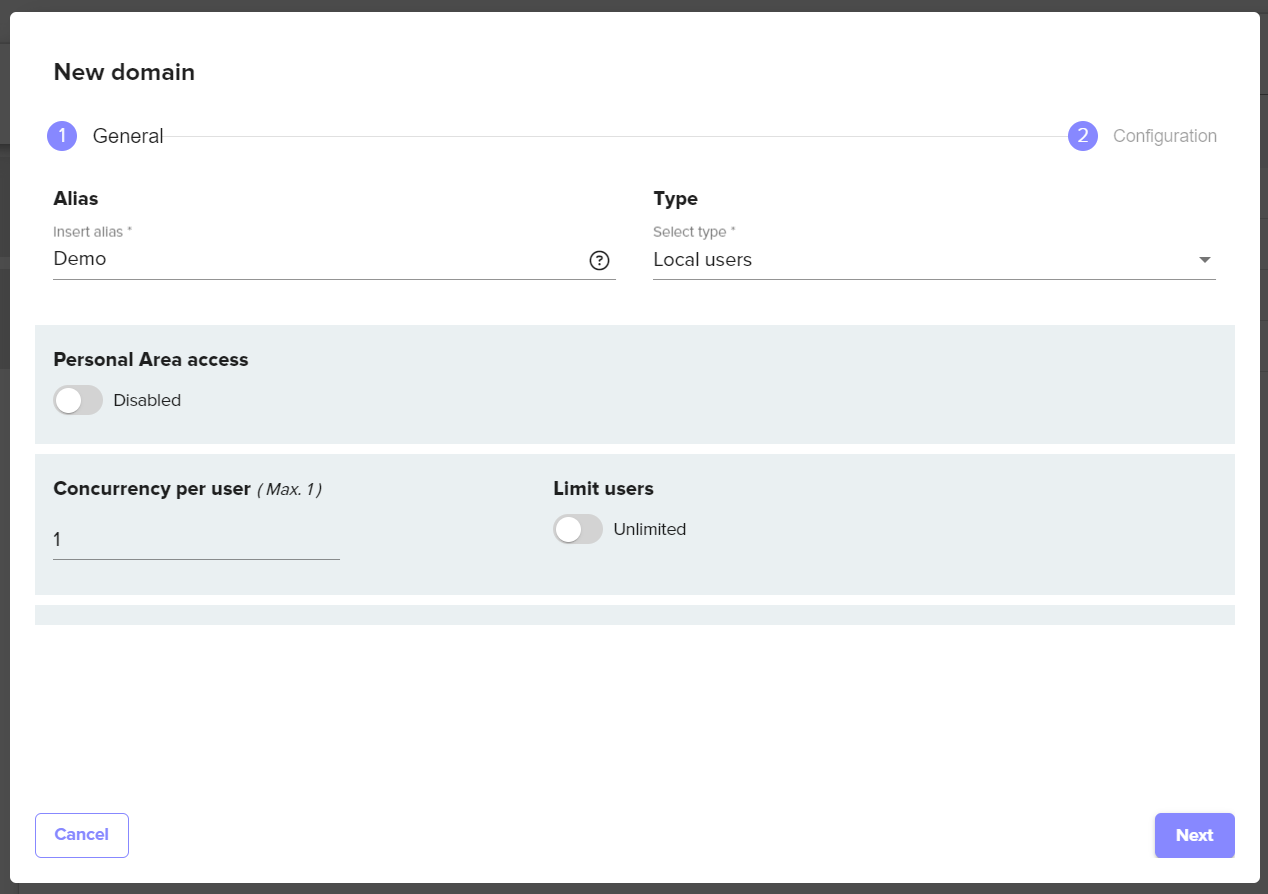Domains
A Domain in Signum is a defined method of authentication for a group of users to authenticate to the Signum service. The method of authentication that is available depends on how the users are authenticating to the service defined in the table below. Multiple Domains can be defined to accommodate various use cases. For example, a SAML domain could be created for an organization's users/groups from an IDP like Azure Active Directory using the Windows Agent in attended mode, while a separate Local Users Domain could be created to authenticate a Linux build server.
Admin Web Console | Web Admin Console | Windows Agent Attended | Windows Agent Unattended | Linux Agent Unattended |
|---|---|---|---|---|
SAML |
|
|
|
|
OAuth |
|
|
|
|
Local Users (Username/Password) |
|
| |
|
Creating a new Domain
To create a new Domain, login to the Admin Web Console and navigate to Access>Domains and select the New button. A new window will appear allowing you to configure the Alias and Type for the new Domain.

New Domain Options
Option | Description |
|---|---|
Alias | This is what users will use to reference this domain when logging in to the service. For example, with a Local Users Domain, a user with the username of “John” would login to the Domain with an alias name of “myDomain” by entering John@myDomain . For SAML and OAuth Domains the Alias can match the email domain of the users. For example, for an organization with emails formatted first.last@companyname.com, the alias could be “companyname.com” . |
Type | For Signum SaaS valid Domain types are:
|
Access to Personal Area | For Signum SaaS this should be left to the default value of denied. Enabling does not change the applications behavior, this field will be removed in future updates. |
Concurrency Per User | Setting for the domain to allow a single user to authenticate into multiple Agent sessions simultaneously. This can be useful for short lived build pipelines and service accounts. |
Limit Users | This field is Optional. It is a limit on the number of users that a given Domain can be configured with. |
.png)